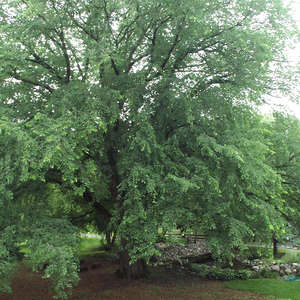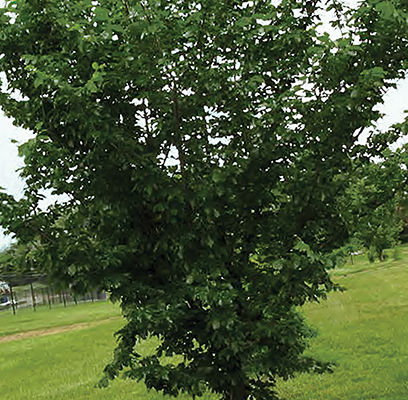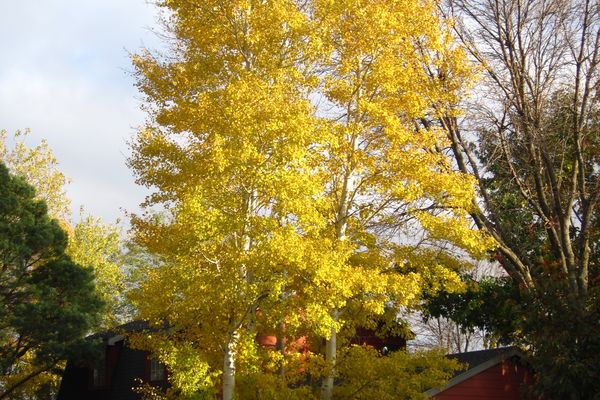A tree that was on the brink of disappearing is now making an amazing comeback. These are the American Elms, Ulmus americana, they are the quintessential shade tree that keeps streets and homes cool in the summer. Their tall, graceful limbs and open habit were nearly lost.
In the late 1990’s researchers found numerous species of American Elms that survived the great die off from the 60’s-80’s. A die off caused by a fungus (Ophiostoma ulmi and Ophiostoma novo-ulmi) that is carried by a tiny European Elm Bark Beetle, (Scolytus multistriatus). A beetle that lays eggs just under the bark and inoculates the tree with the fungus, which eventually kills the tree.
However, several American Elms scattered across the northern U.S., not only survived but thrived with good resistance to the fungus. A lot more University level research went into propagating and testing these survivor Elms for the nursery trade.
Why plant American Elms? To start, they tolerate a wide variety of soils and growing conditions, can deal with drought, wind, minus 40 degrees and take average water. They can get big, up to 60 to 75 feet depending on location and conditions, so plan their placement carefully. They are long lived and fast growing up to 3 feet per year. Most have an open spreading vase shape canopy. Dark green leaves in the summer and golden colored leaves in the fall. More plant nurseries are carrying them. Some varieties to choose from: St Croix, Prairie Expedition, Cathedral, Accolade and Princeton, to name a few of the new American Elms.
A smaller tree to consider is the Prairie Gold (tm/r) Aspen, Populus tremuloides, ‘NE ARB”. This prairie native is disease resistant, fast growing and tolerates a variety of soil types. It was found near Columbus, Nebraska, by Allen Wilke. This Aspen will get 30 feet tall but only 15 feet wide, is fast growing, but long lived. It will survive minus 40 winters and takes average water. The leaves are dark green in the summer and brilliant yellow gold in the fall.
Most Aspens sold at nurseries are wild harvested from the mountains. Where the soil is cool and moist with a short growing season. It is very hard to duplicate those growing conditions on the prairie. Wild harvested Aspens are short lived and prone to numerous diseases. Make sure to get a nursery grown Prairie Gold (tm/r) Aspen suited to lower elevations.
You can find these trees, and many others suited for Laramie County, by browsing our LCMG Bare Root Tree & Shrub Fundraiser. The pre-sale is open until April 20, 2024.
Written by Catherine Wissner, retired University of Wyoming Laramie County Extension Horticulturist and Laramie County Master Gardener.
Follow us on our social media:


